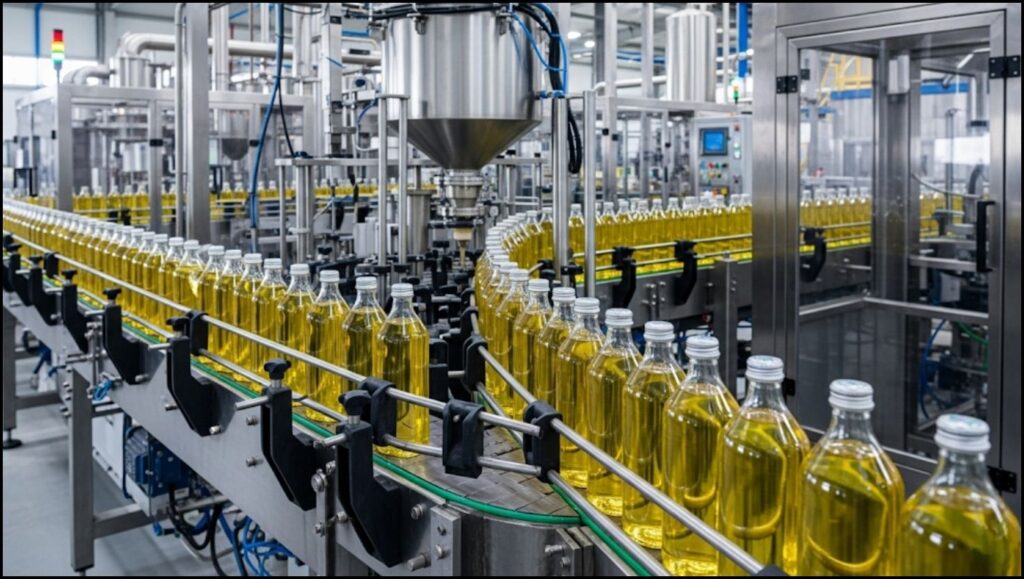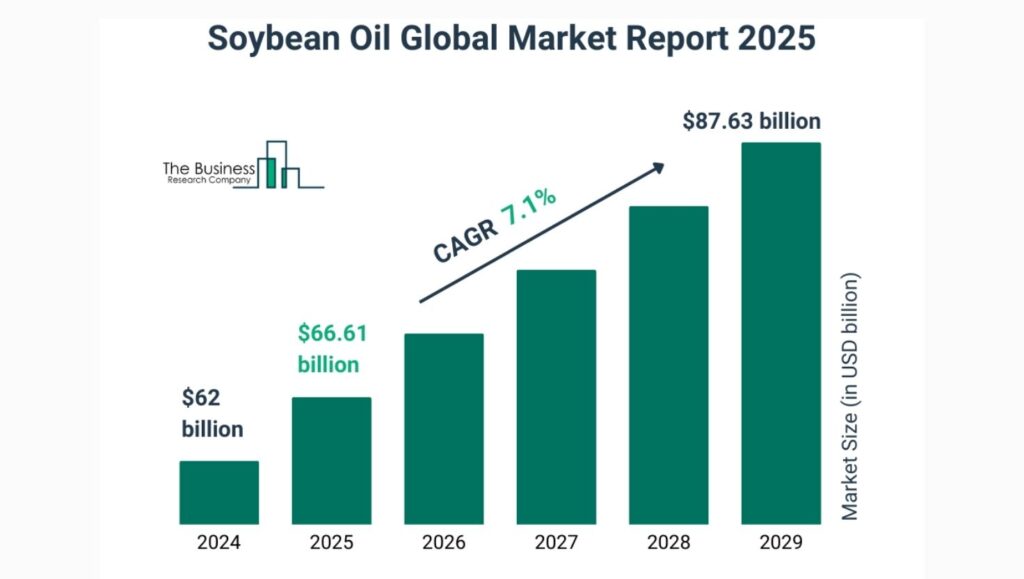China continues to dominate the global vegetable oil market as the world’s largest soya oil producer, a position fueled not by its own soybean harvest but by a colossal domestic industry that processes imported beans. This dynamic, driven by massive demand for both animal feed and cooking oil, underpins the global soybean trade and has significant implications for international agriculture, trade policy, and food security.

China Solidifies Position as World’s Largest Soya Oil Producer
| Key Fact | Detail / Statistic (2024/2025 Forecast) |
| Top Producer | China is projected to produce 18.9 million metric tons. |
| Second Place | The United States follows with 12.5 million metric tons. |
| Primary Driver | Animal feed (soymeal) is the main product; oil is a co-product. |
| Key Import | China is the world’s largest importer of soybeans, sourcing mainly from Brazil and the U.S. |
The Engine of Production: China’s Crushing Industry
China’s leadership in soybean oil production is a story of industrial might rather than agricultural acreage. The country is projected to produce nearly 19 million metric tons of soya oil in the 2024-2025 marketing year, according to data from the United States Department of Agriculture (USDA). This output significantly surpasses that of other major producers, including the United States, Brazil, and Argentina.
The foundation of this dominance is China’s massive soybean crushing sector. The country imports enormous quantities of raw soybeans—over 100 million metric tons annually—primarily from Brazil and the United States. These beans are then “crushed” or processed to separate them into two key components: high-protein soymeal and soya oil.
“The demand for soybean oil in China is intrinsically linked to the demand for soymeal,” said Dr. Scott Irwin, an agricultural economist at the University of Illinois. “The country’s immense pork and poultry industries require vast amounts of soymeal for animal feed. Soya oil is essentially the valuable co-product of that process.” This makes the livestock sector the primary engine driving the entire Chinese soybean complex.

Drivers of Demand: From the Wok to the Fuel Tank
While animal feed is the catalyst, demand for the oil itself remains robust for two main reasons: food consumption and a growing interest in biofuel demand.
A Staple in the Kitchen
Soya oil is one of the most widely consumed vegetable oils in China and across Asia. Its neutral flavor and high smoke point make it a versatile and affordable option for cooking, frying, and as an ingredient in a wide array of processed foods, from sauces to baked goods. As China’s middle class has expanded, so has its consumption of edible oils, solidifying a massive domestic market for the product.
The Emerging Role of Biofuel
Globally, soya oil is increasingly being diverted for industrial uses, most notably the production of biodiesel. This trend is most prominent in the United States and Brazil, where government mandates and incentives encourage the blending of biofuels with traditional diesel. In the U.S., roughly 40% of soya oil is now used for biofuels, creating direct competition between food and energy sectors.
“The ‘food versus fuel’ debate is becoming more pronounced in the global vegetable oil market,” a recent report from the Food and Agriculture Organization (FAO) noted. “As more soybean oil is used to produce biodiesel, it tightens the supply available for food, which can contribute to price volatility for consumers worldwide.” While China’s use of soya oil for biofuel is less developed than in the Americas, its policy direction in this area is closely watched by market analysts.
Global Implications of Centralized Production
China’s role as the largest soya oil producer has profound effects on the world economy and environment. The country’s import needs effectively set the floor for global soybean prices, directly impacting the livelihoods of millions of farmers in the Americas.
This reliance also creates vulnerabilities. Any disruption, whether from trade disputes, extreme weather in exporting nations, or shifts in Chinese domestic policy, can send shockwaves through the market. For example, trade tensions between the U.S. and China have previously caused dramatic shifts in trade flows, with Chinese buyers favoring Brazilian soybeans over American ones.
Furthermore, the environmental footprint of soybean cultivation is a significant concern. The expansion of soy farms, particularly in Brazil’s Cerrado savanna and the Amazon rainforest, has been linked to deforestation and biodiversity loss. As the world’s top importer, Chinese demand is an indirect but powerful driver of this land-use change, a fact that has drawn scrutiny from environmental groups and international bodies.
The complex interplay of these factors—food, feed, and fuel—places soya oil at the center of critical global conversations about sustainable agriculture, trade, and energy policy. As a forward-looking measure, some analysts are monitoring China’s efforts to boost its domestic oilseed production, including rapeseed and peanuts, to reduce its heavy reliance on foreign soybeans. However, for the foreseeable future, its position as the world’s processing powerhouse remains secure.
The World’s Largest Coconut Milk Producer: A Look at Indonesia’s Pivotal Role
